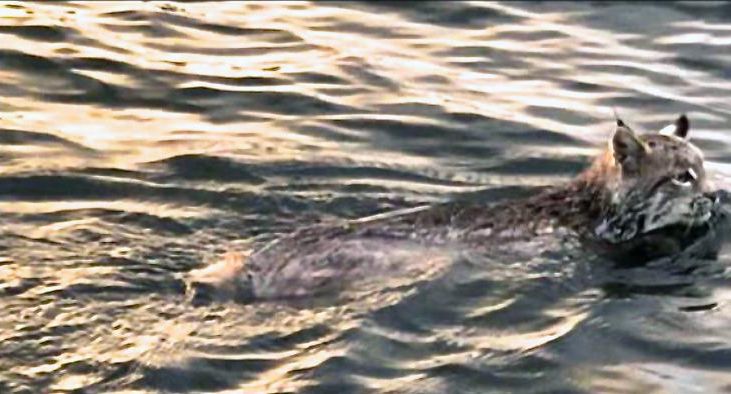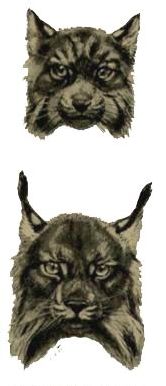
by Trudy Irvine, PaBIA’s Education Committee
This amazing photo above of a lynx (or bobcat?) was taken just west of Steamboat Channel last week. A family was out fishing just west of the narrows about 8 p.m. and noticed the cat 50 feet further to their west, swimming hard for the north shore and contending with a strong west wind.
Given the lack of sightings of these elusive cats, it is surprising to find out that the ranges of both the lynx and bobcat extend to our region – lynx from the north and bobcats from the south. Both species are most active at twilight and are usually very wary of people, which makes spotting them a rare occurrence.
Not only is it unusual to see one of these cats at all, but it is also surprising to see a cat swimming! However, lynx are reportedly strong swimmers (one account records a lynx swimming 2 miles across the Yukon River) and bobcats can swim well when they need to but generally avoid water.
Snowshoe hares are a lynx’s favorite food. Isn’t it a bit surprising that the territory of snowshoe hares extends south to our region too? The hares, which are white in the winter and turn brown in the summer, make up to 75% of the lynx’s diet in the winter, but in the summer the lynx’s menu becomes more varied and they will also eat grouse, voles, mice, squirrels, and foxes. Lynx and snowshoe hare populations are closely related, and a regular boom and bust cycle over 10 years has been observed since the Hudson’s Bay Company began keeping trapping records in the 1800’s. Bobcats also prefer rabbits and hares, but vary their diet with the prey available, and will sometimes prey upon larger mammals. Perhaps it is the bumper crop of mice in PaB this year that tempted this cat to swim out amongst the islands!
It is difficult to distinguish Canada lynx from bobcats, (they are actually close relatives) and details like the larger overall size, feet, ear tufts, cheek fur tufts, and more muted coloring of the lynx compared to the bobcat can’t be seen on this wet cat. Even experts often disagree on identification. For some lively debate, head over to Ontario Fish and Wildlife’s Facebook page, and for a good look at a lynx, watch this video of two of them having their own lively debate! (They are likely sorting out territory and breeding rights, like these two in Alberta.)
